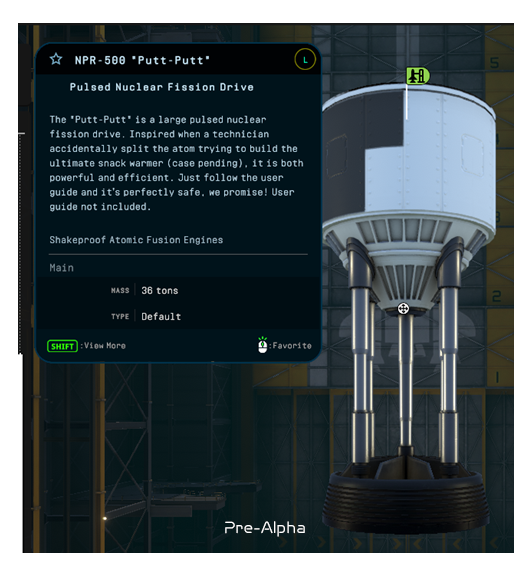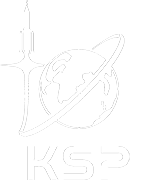Developer Insights #15 - Writing for Kerbal Space Program
Hello, my name is Jim Peck, a.k.a Just Jim here on the forum, and today I am excited to talk to you a little bit about writing for KSP2!
First I should mention how this all happened. A lot of newer members probably don’t know the story, but it really all started here on the forum.
I first discovered KSP (and this forum) about 8 years ago and was instantly hooked. Something I really liked was all the fan-fiction stories being written. I have been fascinated with space and science fiction all my life. I have also been writing all my life. I still have piles of notebooks lying around filled with all sorts of fun stuff I may revisit someday. So I decided to start my own fan-fiction story “The Saga of Emiko Station”. And it was really popular. A couple years later I was still writing Emiko when I heard about a QA position that was available for KSP, and I applied, and to my delight I was hired! I spent the next 3 years working on KSP and learning a lot about how the game really works. And having way too much fun.
As far as KSP2, I was honored to be one of the very first in Squad to be given access to the game, and it gave me a lot of insight for what was to come later on. Last year I moved over full time to help on KSP2, and a few months ago I was super excited to become a full-time KSP2 writer!
So enough about me, let’s talk about the game.
To be clear, when I say I’m a writer, I do not mean writing/designing the game on a large scale. Those are design decisions that fall mostly on Nate Simpson, Shana Markham, and the rest of the senior staff. My job is writing out all the text that is used in the game, and it is a little more involved than you might think. One of the most important aspects of my job is maintaining the spirit and flavor of the original KSP as closely as humanly (Kerbally?) possible. I can safely say everyone on the team feels the same. KSP is incredibly unique and continues to be so. Not just for the game physics, but also because of the Kerbals. Kerbals are a vital element in adding some fun and humor to what is otherwise a very challenging subject. But the game is not about the Kerbals directly, it is about building and flying rockets. It's up to me to help bring life to our little green friends with the writing; help the players know who they are, how they think, what is driving them to the stars. OK, so one of my largest and most involved tasks is writing up the text for all the parts. There are somewhere around 600 parts currently planned for KSP2. I do not have the exact number off-hand, but somewhere around there. And this is a very big chunk of what I’ve been working on these past few months.
For each part in the game there are 4 items I need to focus on:

Title
Part titles can be a model or designator number or a name, and often both, which can get a little confusing, especially to newer players. KSP parts will keep their existing titles, such as the FL-T400 fuel tank or LV-909 "Terrier." To make things a little more understandable, we added subtitles.
Subtitle
Subtitles are more descriptive than our colorful titles, and they help players identify a part without having to dig around the tooltip. This is especially handy in cases where we got a little crazy with the titles: Title: Advanced Photonic Generation System Subtitle: Lightbulb
Manufacturer
All of the existing KSP manufacturers will be in KSP2, along with some new ones! We are giving them a little more of a voice and influence, some of which is reflected in how they name or describe the parts they make. All of this is to add some variety and humor while also maintaining a sort of consistency between parts and manufacturers.
For instance, despite being fierce competitors, Kerbodyne & Rockomax have very similar writing and naming styles (but would never admit it). C7 Aerospace considers themselves a little “better” than the rest of the manufacturers and would never, ever admit to a mistake, whereas Jebediah’s Junkyard would pride themselves in inventing a new engine by accidently exploding a bar-b-q grill.
Description
Part descriptions are where things get really fun, but also a little more challenging. In KSP, part descriptions were funny, but sometimes not very descriptive. There is a real opportunity for them to tell you about the use case or the science behind a part, so we are making these more descriptive while also including the Kerbal style of humor whenever possible.
The biggest challenge is I have to do all of this with 300 or less characters, including spacing and punctuation. This is to ensure they fit into the pop-up window properly, but means I have to choose each and every word very carefully to make these as beneficial and funny as possible for the players.
For new KSP2 parts the process is very similar. I will give a new part a title and subtitle that matches up with other parts of that type, and assign it to the most appropriate manufacturer, including several new KSP2 manufacturers. One of my favorite new manufacturers is:
Shakeproof Atomic Fusion Engines (SAFE)

Shakeproof Atomic Fusion Engines are the designers and builders of some of the newer tech engines, such as the Orion-style fission engines shown in our previous videos, and guarantee all their products to be completely safe. I mean, it’s right there in their name, so they must be safe… right, right???

While I’m on the subject of the newer technologies, one of the really fun things I get to do is researching the new techs. Everything we’re doing is grounded in real science, even if some of it is theoretical, and all of us on the team spend a great amount of time making sure everything is as accurate as possible for you, the player.
Now once I’m done writing these, they are all checked over (and often tweaked) and approved by our senior design manager: Shana Markham. And let’s not forget our legal team. They also have to approve everything I write, and are another reason why finding the exact wording is so important. Once everything has been approved it must be implemented into the game. There are tags in the game everywhere, each with its own text string attached. Usually the person(s) working on the feature will do the set-up, I just provide the text. It is a huge process, and I am grateful for all the work that my teammates put into it.
Another very important part of the writing process is we are localizing KSP2 into several different languages. This means we have to be extra careful about the writing process in general, as well as finishing far enough ahead for our localization teams to have enough time to translate everything. Sometimes there might be an issue with a particular translation, such as how a joke is perceived in a certain language, and we need to work out the proper wording. I helped the KSP localization teams quite a bit and I had a lot of fun. It can be a really unique and interesting challenge playing the game in the different languages, and I got quite good at it after a while.
OK, so this does not just apply to parts. It is an example of everything that must be written for the game: experiments, the tech tree, celestial body descriptions, etc, etc... Every written bit of text in the game goes through the same process. Literally thousands of text strings that must be translated into all our different languages, and then implemented into the game in order to inform, teach, and make our players laugh and have fun.
And that’s it, that’s what I do. Best job ever!!!
One more thing. I would like to point out that we all work on this together. There have been a few times where I was stuck on a word or phrase and posted it on our slack channel and the next thing I knew I had 5 or 6 terrible jokes or puns from the rest of the team to choose from… And what would KSP be without the occasional horrible joke or pun? Seriously, we are a very tight-knit team, and we have a lot of fun, and I wouldn’t have it any other way.
I’m going to end this with one last note. To those of you that want to be writers, or whatever your dream may be… Please don’t ever give up on it. If you like to write, then write, and write a lot. Not for money or attention or hits on the internet. Do it because you want to. The rest will come later. Trust me, I’m living proof.
-Cheers
Jim
